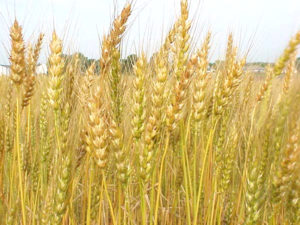 Grain futures were mixed on Thursday with soybeans and corn declining, while wheat advanced on prospects for increased demand from China.
Grain futures were mixed on Thursday with soybeans and corn declining, while wheat advanced on prospects for increased demand from China.
On the Chicago Board of Trade, wheat futures for delivery in December traded at $6.7175 a bushel at 9:21 GMT, up 0.17% on the day. The grain rose to a session high of $6.7463 per bushel earlier in the day, the strongest level since July 15, while days low stood at $6.6988. The contract rose by 1.8% on Wednesday and extended its weekly advance to over 4% following Thursdays gains.
Wheat continued to gain positions ahead of USDAs exports report, due to be released at 12:30 GMT. According to a Bloomberg survey of analysts, U.S. outbound shipments have probably risen to between 450 000 and 850 000 tons in the week ended September 19, up from 425 993 tons a year earlier, as Chinas demand may have tripled. The Asian country, the worlds biggest consumer, may increase imports to reduce local prices and boost stockpiles. Smaller domestic output and higher demand this year led to a 3.4% jump in prices in September, data by China National Grain & Oils Information Center showed.
Michael Pitts, a commodity sales director at National Australia Bank Ltd. in Sydney, said for Bloomberg: “We’re starting to see a bit more of a focus on the demand side. Shipments and sales have been very good over the last month or so.”
Meanwhile, DTN reported on September 25 that showers at the end of the week in the Southern Plains will help improve soil moisture for the winter wheat crop but there might be some delays to summer crop harvests and winter wheat planting.
The USDA reported on Monday that as of September 22, 23% of the winter wheat crop was planted, the same like the comparable week a year earlier and 1% below the five-year average pace. Meanwhile, 93% of the spring wheat crop was harvested last week, the same as the five-year average but below last year’s full completion.
Soybeans and corn decline
Elsewhere on the market, soybeans and corn declined. The U.S. Department of Agriculture reported on Monday that the corn crop condition has improved last week but harvesting fell well behind last year’s pace. The government agency said that as of September 22, 16% of plants were rated very poor-poor, compared to 18% a week earlier and 51% in 2012. Meanwhile, 29% of the crop was categorized as “Fair”, the same as last week and above the previous year’s 25%. As for the premium quality, 55% of the harvest was rated good-excellent, marking a 2% improvement from the previous period and well above last year’s 24%.
As for the harvesting pace, the USDA reported that 7% of the crop was reaped as of September 22, up from 4% in the previous week but well below the five-year average pace of 16% and last year’s 37%.
On the Chicago Board of Trade, corn futures for December settlement fell by 0.14% to $4.5438 a bushel at 9:16 GMT. Prices held in range between days high and low of $4.5575 and $4.5288 a bushel. The grain rose by 1.3% on Wednesday but trimmed its weekly advance to 0.5% after Thursdays gains.
Meanwhile, soybeans for delivery in November slipped 0.59% to $13.1325 a bushel, ranging between days high and low of $13.2163 and $13.1138 per bushel. The oilseed surged 0.7% on Wednesday but erased its weekly advance after Thursdays fall and plunged 0.2%.
The USDA reported on Monday that the crop condition remained unchanged last week after worsening for five consecutive weeks. As of September 22, 50% of the plants were rated good-excellent, the same as in the previous period and well above last year’s 35%. Meanwhile, 33% of the crop was categorized as “Fair” and 17% as “Very poor” and “Poor”, compared to 32% and 18% in the previous week respectively.





